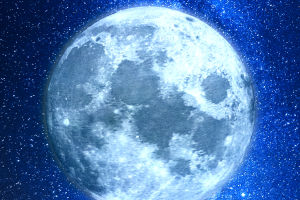According to data, Earth is located about 100,000 light-years from the center of the Milky Way, on one of its spiral arms.
So when we gaze up at the stars, we may see a faint elongated strip, which is the Milky Way itself. Comprising over 200 billion stars along with thousands of star clusters and nebulae, the Milky Way forms a disk-shaped stellar system.
The Milky Way belongs to the barred spiral galaxy category, containing between 1000 to 4000 billion stars, star clusters, and nebulae. It has a diameter of about 100,000 light-years and a thickness of approximately 12,000 light-years at its center. The total visible matter mass is about 1.4 trillion times that of the Sun.
The Milky Way exhibits a vast disk structure, consisting of a galactic bulge and four spiral arms. The arms extend about 4,500 light-years from the galactic center, with our solar system located on the Orion Arm. When we look at the Milky Way from Earth, we perceive it as a barred structure, akin to viewing a plate from its side.
Generally, the closer we look toward the center, the denser the concentration of stars. When we look in various directions from Earth, most of what we see is deep space, with few stars. Only towards the center of the Milky Way do we find a dense concentration of stars. Therefore, against the backdrop of deep space, what we see is a bright band, known as the Milky Way.
Furthermore, upon close observation of galaxy photos, it becomes evident that galaxies are not entirely clear. They are filled with cosmic dust and what's known as dark matter. This results in a cloudy, murky appearance. The Milky Way is no exception, with vast amounts of dust scattered throughout its disk. Consequently, from Earth, much of the Milky Way is obscured, and we only see a limited portion, an incomplete representation.
To illustrate, imagine Earth as a small boat floating in a river, with the Milky Way as the vast river. The various boats and objects in the river can be likened to other stars or planets. We exist amidst this, thus able to perceive the river, albeit with differences from its true form.
Viewing the Milky Way from above would reveal a perspective entirely different from what we observe from our 'small boat' on Earth. Due to its immense size, the Milky Way we see in the night sky is just a tiny fraction of the entire galaxy.
As for the scenery around us, each bright star or planet is a member of the Milky Way, though they may appear as if they are outside the galaxy due to their proximity to us. In reality, they all reside within the Milky Way, just as small boats in the vast cosmic river.
In the vast expanse of the universe, our life on Earth seems like a tiny outpost, wandering on the edge of the Milky Way. Yet, it is precisely the existence of this cosmic ocean of stars that drives us to continually seek the mysteries of the universe and explore the meaning of our existence.
Wherever we may be, the Milky Way is our home, and our spirit of exploration will forever guide us forward, to explore the broader cosmos and uncover deeper truths.


